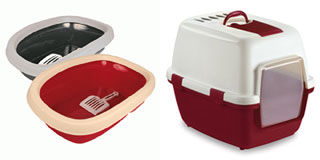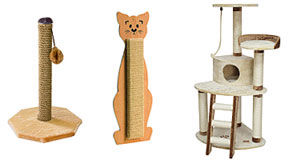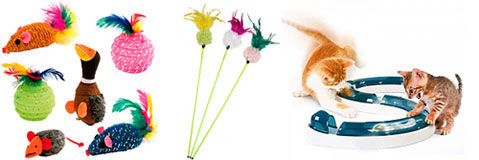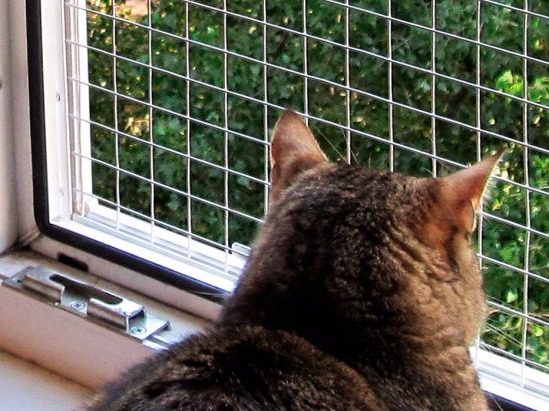Siberian cat is the most popular breed in Russia, endowed with countless virtues, the main of which are gorgeous appearance, great character, intelligence and devotion.
Siberian cats, beautiful and respectable, with magnificent thick hair, have long won national love, having managed to demonstrate their best qualities in communicating with people. Behind their outer calm is confidence and strength, while they are delicate, sensitive and balanced. These cats combine power and grace, tenderness and independence, playfulness and self-esteem.
Basic moments:
Siberian cat is a strong animal, ranging in size from medium to large. Female cats weigh an average of four kilograms, male cats - at least six. It happens that the weight of the male reaches 12 kg.
Endowed with great vitality, excellent health, agility and courage.
They reach true maturity by three to five years, live long, sometimes up to 20 years.
They have a calm character, friendly, affectionate, but they are suspicious of strangers.
Siberian cats are independent, tactful and never bother their owners, chasing them on the heels.
They get along well not only with people, but also with animals that show friendliness towards them, however, the aggressor relatives will be immediately rebuffed.
Extremely neat, very clean, with the need for grooming. The hair of a well-groomed cat should shine and shine.
One of the main advantages of the breed is a variety of colors.
Siberian cat history
The image of a Siberian cat - a large, fluffy, healthy animal, with a developed hunting instinct, not afraid of harsh winters, has incorporated all the archaic ideas of Russians about pets of a cat family. For a long time, our compatriots called each large long-haired representative of the cat family a Siberian cat, or Siberian, whether it was a family minion or a yard robber.
Until the end of the last century, perhaps not one of the owners of the Siberian in our country thought about the origin of his favorite, implying for granted that the ancestors of the animal come from Siberia. But in the 80s, when felinological organizations and clubs for cat lovers began to be created in Russia, the question arose: who are the ancestors of the most popular representatives of the cat genus?
Disputes are still ongoing. It is believed that the distant ancestors of true Siberians are Norwegian forest cats. They could be brought to Siberia by immigrants from the northern regions of Russia during the development of this territory, which began in the 16th century. Written references to the so-called Bukhara cats, fluffy strong animals that could be found in all regions of the Russian Empire, and not only in Siberia, also belong to the same period. They allegedly came to Russia along with merchants from Central Asian countries. Bukhara cats are often called relatives of Siberians. It is also possible that domestic cats caught in Siberia could have offspring from wild cats. As a rule, among the latter, manulas are mentioned - cute butuzes the size of large domestic cats, owners of the thickest and fluffiest fur among cats.
Most felinologists reject such a concept as a single “native Siberian breed”, and call unconfirmed assumptions about the ancestors of the Siberian cat called myth-making. They indicate that in the 80s of the last century, at the beginning of the “cat movement”, there was a definition for Siberians in Russia that meant something like “a large cat with thick hair and not white color”.
However, no matter who the ancestors of domestic cats from the Siberian territories were, their genes were not originally a fundamental link in the breeding of a standardized breed, which began in 1986. During the formation of the pedigree core, and this happened mainly in Moscow and St. Petersburg, the breeders mainly selected for breeding the largest and most furry domestic cats of the “Siberian type” from those brought to them by the townspeople to determine the breed. Nobody went on an expedition through the remote taiga villages of Siberia in search of “true Siberians” at that time, and only a few animals brought from the Trans-Ural regions of Russia were registered in felinological clubs of both capitals. Then there were even proposals to give the breed the name "Moscow".
In the future, feline representatives from Siberia and the Far East began to actively engage in breeding work. They represented a rather motley exterior group: cats from Krasnoyarsk, Novosibirsk, Kemerovo were distinguished by a specific fine texture of wool, animals of Far Eastern origin were distinguished by large size, massive skeleton, heavy head, long coat with a rough texture. In a word, the variety of cats of the “Siberian type” did the breeding work to breed the original, truly Russian breed, very painstaking and not easy.
In 1991, the World Cat Federation (WCF) adopted the Siberian cat breed standard, developed by reputable felinologist Olga Mironova. He was approved as a worker. Three years later, the organization recognized the standard as official.
In 1996, the breed was recognized by the American organization TICA, and a year later, Russian breeders achieved the recognition of the Siberian breed as another prestigious felinological federation - FIFe.
Today in Russia there are several well-known centers where they breed Siberian cats. The main ones are located in Moscow and St. Petersburg, but such cities as Saratov, Krasnoyarsk, Kirov, Petrozavodsk, Yekaterinburg, Kursk have already joined them, more than a hundred clubs in different regions of the country also work. We can say that the first truly Russian cat breed was formed, but breeders do not stop in their work to consolidate the type of breed, paying special attention to the preservation of the large size of the animal and its massiveness, as well as the quality of the color. One of the colors of the Siberian cat, called “Neva Masquerade”, is singled out by Russian and some international felinological organizations as a separate breed.
The appearance of a Siberian cat
Siberian cats have a truly lordly appearance. Large enough in themselves, they look even more impressive thanks to their luxurious coat. A powerful torso with strong muscular paws in a surprising way harmonizes with the cutest graceful muzzle, under which the impressive "frill" flaunts.
Body:
The Siberian cat is proportionately folded, its massive dense body of medium length, slightly elongated. The back is powerful, the neck is short, the chest is voluminous.
Head:
The shape resembles a wide trapezoid, the muzzle is characterized by a smooth outline. The transition from forehead to nose is not sharp. The chin is well defined, cheekbones are developed, low set, cheeks full.
Ears:
The ears of the Siberian cat are medium-sized, wide at the base, slightly rounded at the tips. A slight forward bend is noticeable. The auricle is covered with wool.
Eyes:
Expressive, medium-sized, oval in shape, widely spaced and slightly slanted. Eyes are stained evenly, their color can be green or yellow in all shades.
Limbs:
Muscular, thick, medium length. Paws are large, round, between the fingers - bristly tufts of hair.
Tail:
The tail of the Siberian cat is of medium length, wide at the base, gradually tapering to a rounded tip. It is evenly pubescent, resembling a raccoon tail.
Wool:
The Siberian cat has a very dense, soft undercoat with a fine texture. It is covered with a coarser integumentary hair, also quite dense, harsh to the touch. The integumentary hair evenly covers the back and flows smoothly to the sides and base of the tail of the animal. The coat is shiny, water-repellent. Summer - much shorter than winter. In the warm summer season, the Siberian may look like a short-haired cat, only the tail remains fluffy. In winter, the coat looks very rich, the cat has a luxurious collar, hind legs are decorated with fluffy “panties”, the tail becomes even more pubescent.
Color:
The colors of the Siberian cat are solid and patterned. Among the main solid (monophonic) colors of the Siberian - black (exclusively black pigment is represented in the wool) and red (only yellow pigment is present in the wool). Each of these two intense colors corresponds to a clarified analogue: black - blue, red - cream. In all cats with a monochrome color, without exception, all hairs are dyed evenly from root to tip. Among the intense colors, those that look most juicy and bright are most valued. For clarified analogues of solid colors, on the contrary, light, delicate shades are preferred.
There is also a tortoise color - the imposition of a plain black color on a plain red and, accordingly, blue - on a cream one. In this case, spots of black and red or blue and cream colors are evenly distributed throughout the coat. Usually this color is the dignity of females, but sometimes male turtles are also born, however, as a rule, they are not able to give offspring.
One of the most common colors among Siberian cats is tabby (wild color). In this case, dark and light patches alternate on each hair, forming certain patterns on the animal’s coat. Three basic varieties of this color are recognized in the Siberian breed: marble (classic), brindle, spotted. Each of them has its own color intensity.
Neva Masquerade - Siberian cat of color color, isolated in a separate breed
Smoky (or smoky) and silver colors of Siberian cats are also recognized as a standard. In this case, the hairs are not completely colored: at the roots they do not have pigmentation, remaining pure white, then, as they approach the tip, they can be colored in black, blue, red, cream, tortoiseshell, cream-blue.
Very good Siberian cats of golden color, whose fur effectively harmonizes with their green eyes. In such cats, part of each hair is dyed apricot.
Rare, but very beautiful is the white color. The so-called colors with white are also recognized.
Siberian cat character
Siberian cat plays with the owner.
Siberian cats are mobile and playful, like to indulge in babies and are very attached to the owners. Moreover, they have a pronounced self-esteem, are not very "talkative", it happens, they behave waywardly and are subject to a change of mood. If the cat does not reciprocate the owner's pet, it is better to leave him alone. In turn, having a developed sense of tact, she herself will never be imposed on the owner if she notices that he is not in the mood or is busy with something. But she can make anyone laugh, showing her funny habit of basking on her back, taking funny poses. Emotion is also caused by the way this animal loves to sleep, lounging on its back and raising its front legs.
Siberians have a strong character, but they do not seek to dominate relations with other animals, which are usually friendly. These cats are fearless, but they prefer not to communicate with strangers, showing them undisguised suspicion.
They are hardy and unpretentious to living conditions: they feel great both in urban conditions and in suburban homes, although they like more, of course, space and will. These cats are born hunters, and where they host, you will not meet rodents.
If a Siberian cat lives in a city apartment, it is advisable to walk it at least once a week, as it is very curious, likes to explore new territories and needs physical activity. These cats like to watch the terrain from the heights, so they love to settle on cabinets, bookshelves, and are not indifferent to chandeliers.






